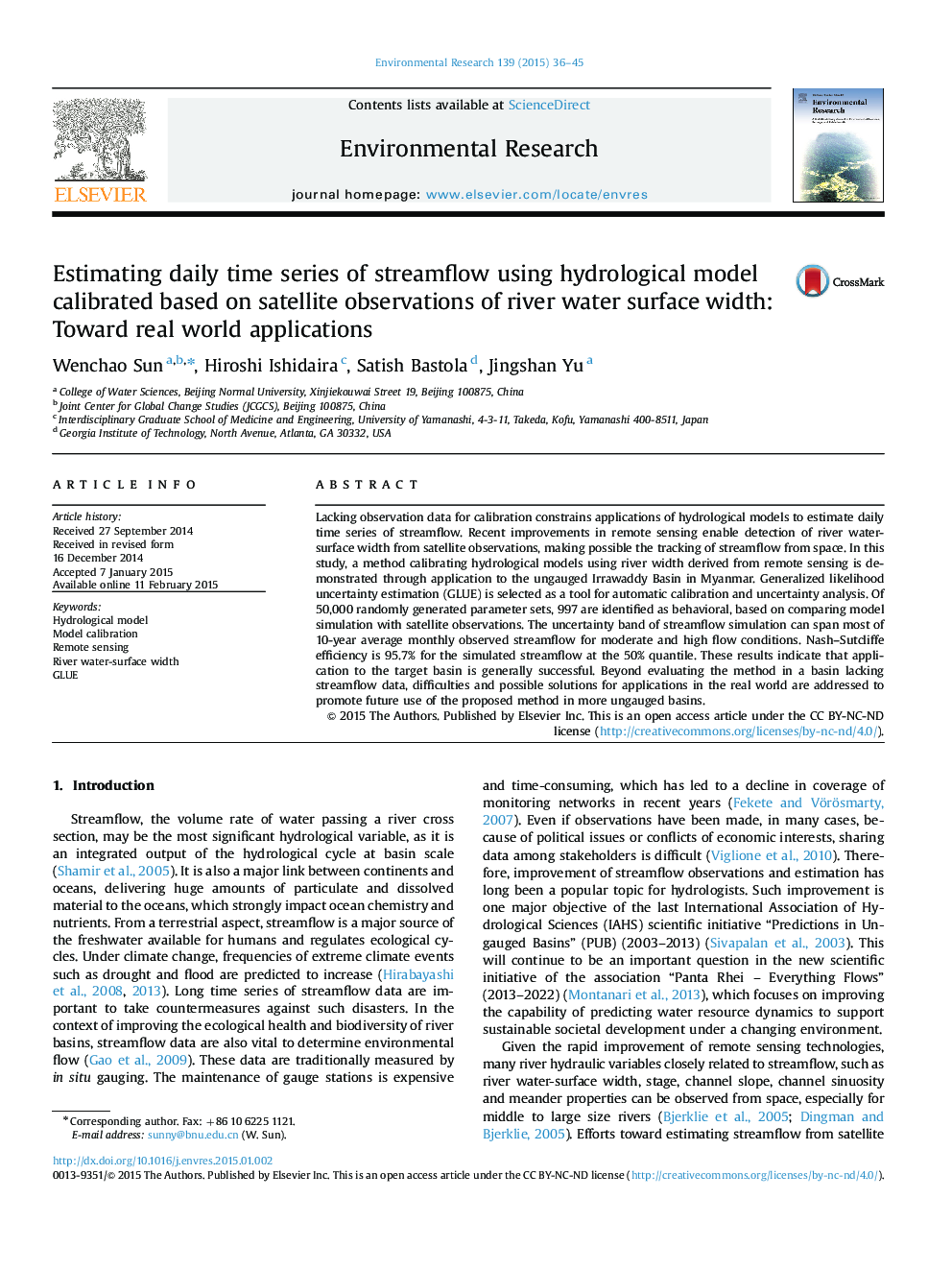| Article ID | Journal | Published Year | Pages | File Type |
|---|---|---|---|---|
| 6352188 | Environmental Research | 2015 | 10 Pages |
Abstract
Lacking observation data for calibration constrains applications of hydrological models to estimate daily time series of streamflow. Recent improvements in remote sensing enable detection of river water-surface width from satellite observations, making possible the tracking of streamflow from space. In this study, a method calibrating hydrological models using river width derived from remote sensing is demonstrated through application to the ungauged Irrawaddy Basin in Myanmar. Generalized likelihood uncertainty estimation (GLUE) is selected as a tool for automatic calibration and uncertainty analysis. Of 50,000 randomly generated parameter sets, 997 are identified as behavioral, based on comparing model simulation with satellite observations. The uncertainty band of streamflow simulation can span most of 10-year average monthly observed streamflow for moderate and high flow conditions. Nash-Sutcliffe efficiency is 95.7% for the simulated streamflow at the 50% quantile. These results indicate that application to the target basin is generally successful. Beyond evaluating the method in a basin lacking streamflow data, difficulties and possible solutions for applications in the real world are addressed to promote future use of the proposed method in more ungauged basins.
Related Topics
Life Sciences
Environmental Science
Health, Toxicology and Mutagenesis
Authors
Wenchao Sun, Hiroshi Ishidaira, Satish Bastola, Jingshan Yu,
